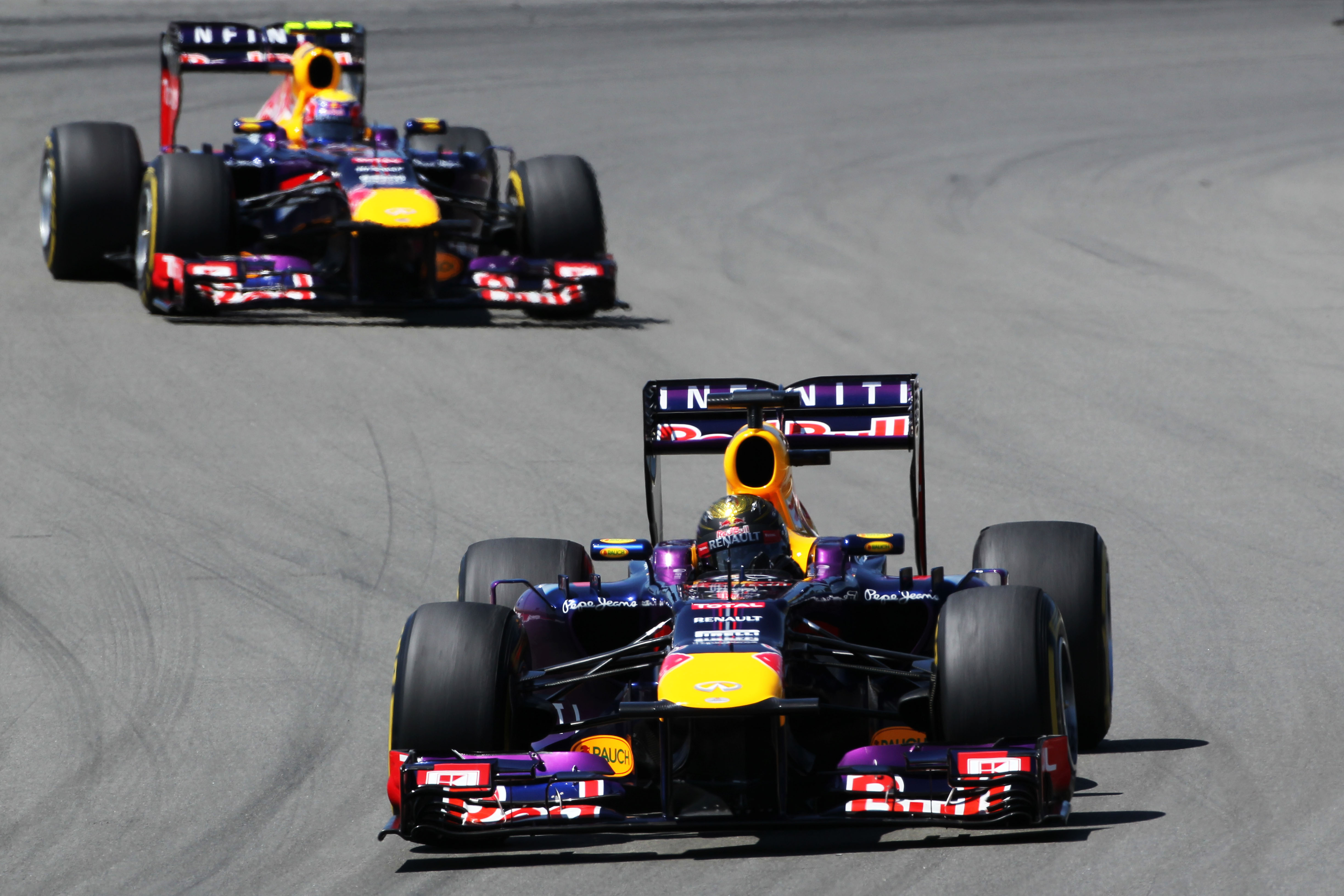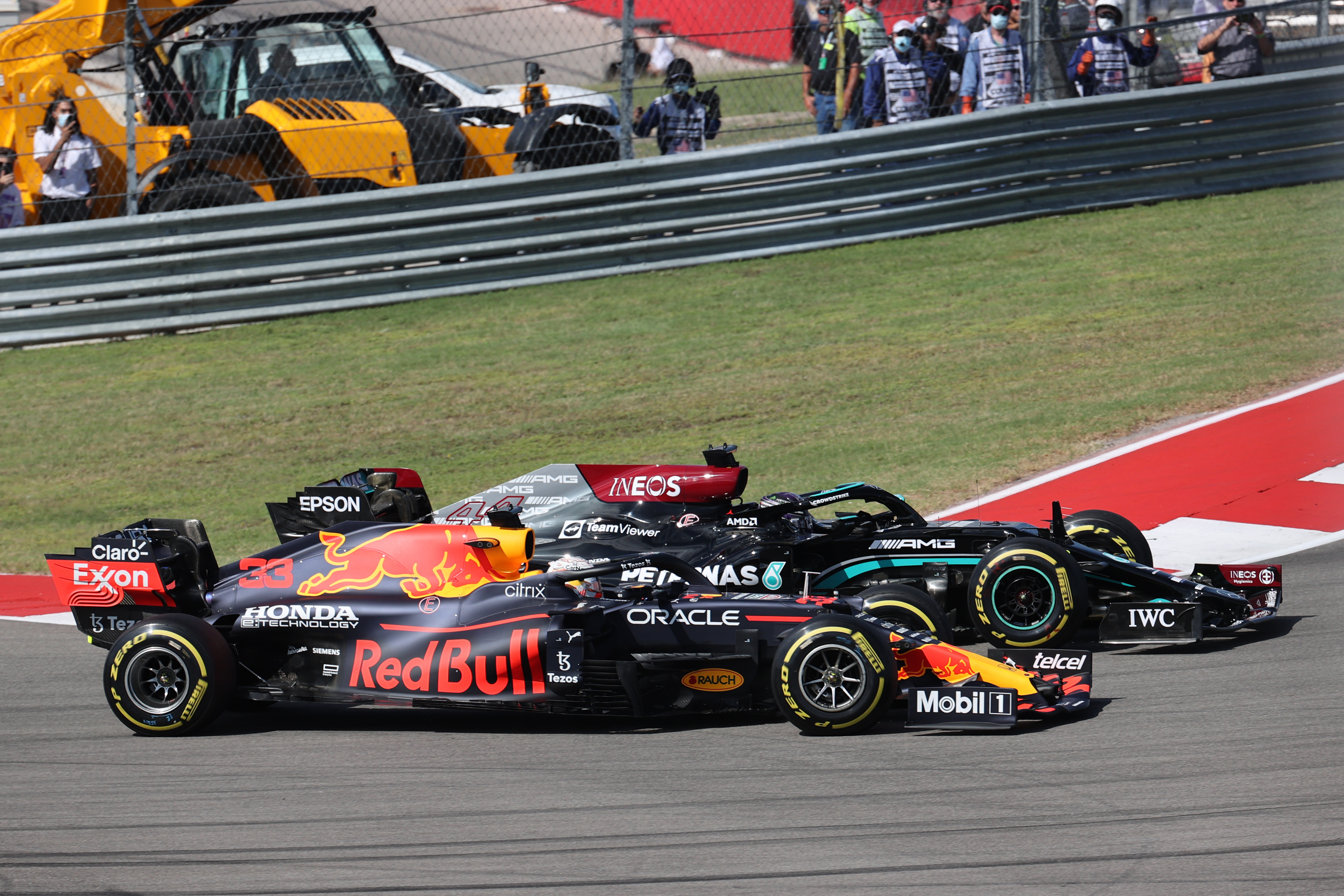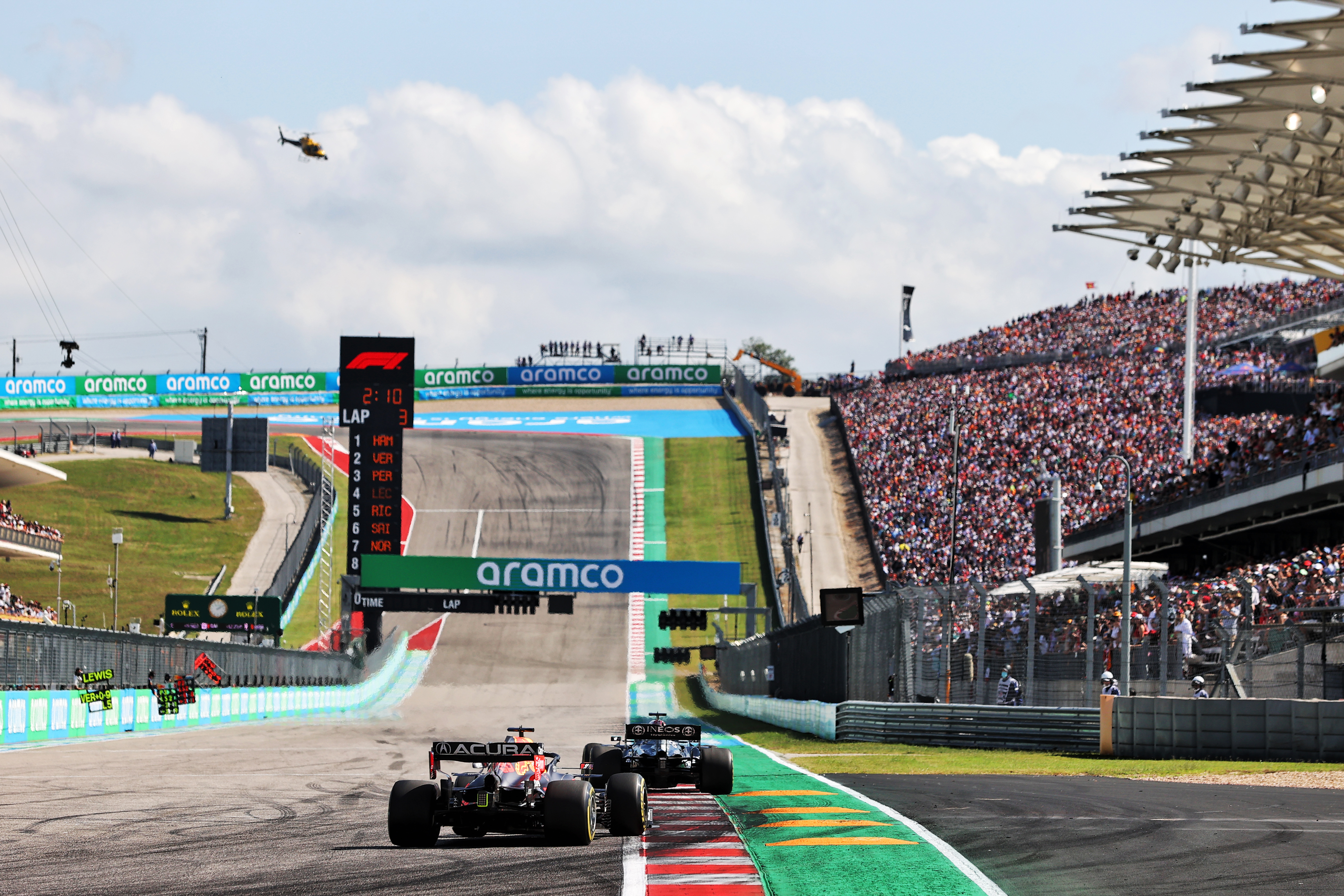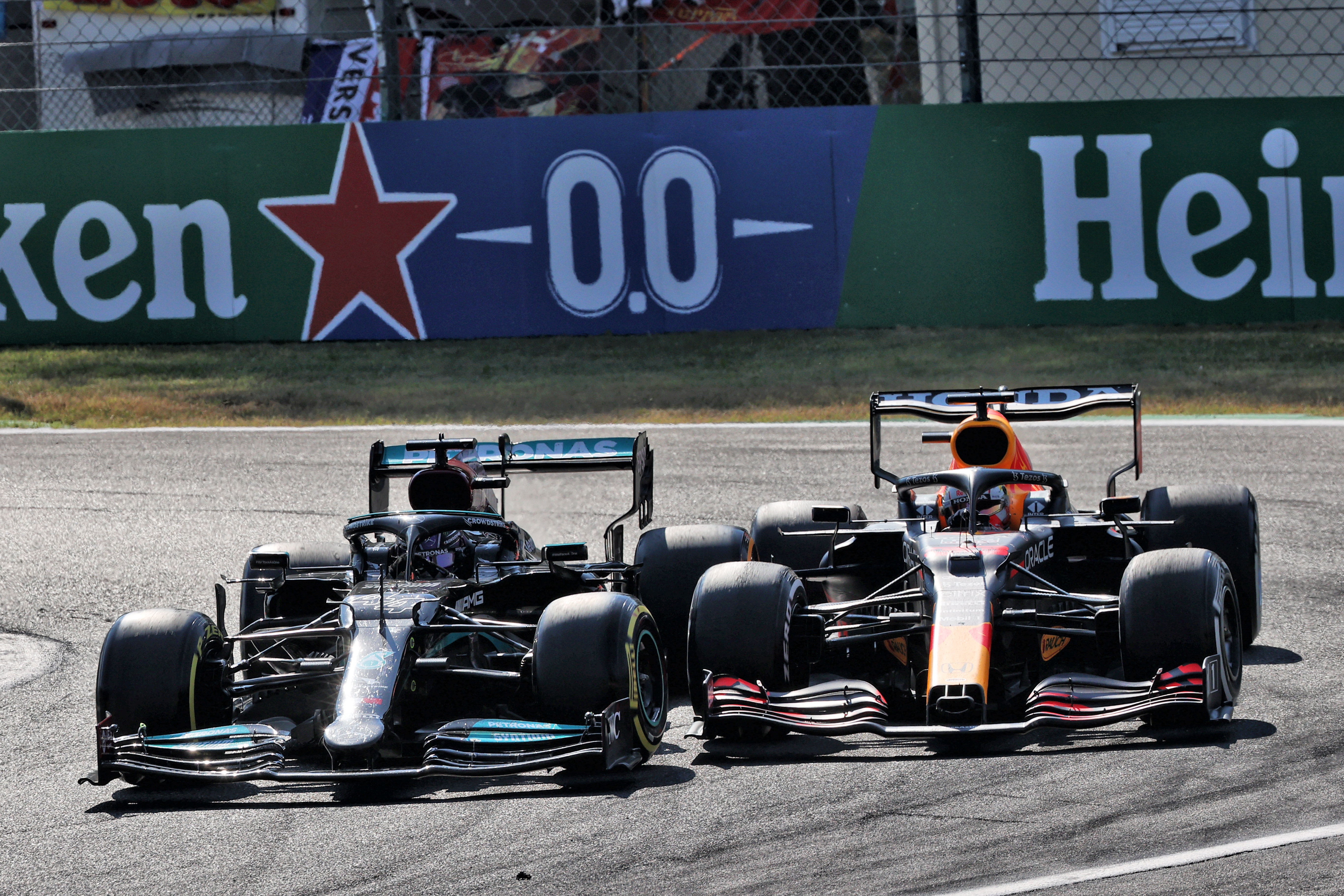It’s always difficult to draw definitive conclusions about why a certain car suits some circuits and not others. We have heard many times ‘this is a Mercedes circuit’ or ‘this is a Red Bull circuit’, and the reality of these assumptions is that they are often only taken from previous data. But who did well there in the past is no guarantee of future success.
The world championship fight will be decided over a run of five races in six weekends, so let’s try to understand if there really is what might be called inherent DNA in either the Red Bull or Mercedes chassis and engine packages that will bias the prospects in favour of one or the other.
Laptimes are one thing, but top speed is another. Yes, they are both important when it comes to your grid position, but on a clear lap with a well-balanced car, you can tolerate losing a little top speed to your direct rivals because the extra grip from the fresh tyres for that one lap will see you through a reasonable deficit in top speed.
For the race, it can be a completely different matter. If you can qualify on pole position and have the confidence and speed to open up a big enough gap to get out of the DRS zone then fine. If not, that’s when straightline speed becomes more important than cornering speed.
This is what Red Bull did so many times to win its four drivers’ and constructors’ championships from 2010-2013. But if Red Bull didn’t get on pole and didn’t lead in the early stages, it became much more difficult to get through the field to the front.

Mercedes followed the same philosophy from 2014 but had the added advantage of the best engine package for many of its double championships. Things got a little more frantic in 2018 and ’19 when Ferrari pushed the limits of how it interpreted the engine regulations in ways that have never been made public thanks to a secret deal with the FIA.
But in 2020, when Ferrari played with the same-sized goalposts having collaborated with the FIA to prevent anyone from doing what it was previously doing, its performance having dropped away dramatically.
In late 2020 and now through 2021, it was Honda’s turn to put the pressure on Mercedes, which no longer had a three-, four- or five-tenths advantage to play with. It was now down to who could get the best from their package every weekend.
For the 17 races so far this season, it has been nip and tuck between the two teams – or at least between Max Verstappen and Lewis Hamilton, with Sergio Perez and Valtteri Bottas stepping up to the plate every now and again but in reality not often enough to have any real impact on the championship.
Let’s delve into the performance patterns in more depth by looking at all 17 events held so far this season. During that period, we’ve heard plenty of accusations between Red Bull and Mercedes about who was or is up to whatever, but neither team boss seems to have just come out and said “this is a world championship, so of course it’s tough and may the best team win”.
I include the drivers in that as they also need to stop trying to find things the other might be doing that are close to the mark. It’s been about power unit improvements, flexible rear wings, dropping rear ride height or whatever – just get on with it and understand that both teams will – and must – push the limits. It’s not easy and only one team and driver can win.

So what can we glean from the data so far? I have taken the laptime for the fastest lap in qualifying, converted that into a velocity in m/s and the maximum speed converted into m/s. I have done this because it’s interesting to relate this speed to the length of a typical car, which is roughly 5.5 meters tip to tail. When you look at the differences in maximum speed, you can appreciate how difficult it is for a driver to pull off an overtaking manoeuvre, or at least how difficult it would be if neither car had the benefit of the dreaded DRS.
Now this is all about Red Bull and Mercedes and their four drivers. Others have done a fantastic job, like Ferrari at Monaco and Azerbaijan and McLaren at Monza and Sochi, but the championship battle at the front is between Red Bull and Mercedes.
Fastest qualifying lap (m/s)
| Red Bull | Mercedes | Delta (+ = Red Bull faster) | |
| BAHRAIN | 60.811 | 60.547 | +0.264 |
| IMOLA | 65.940 | 65.971 | -0.031 |
| PORTUGAL | 59.161 | 59.678 | -0.517 |
| SPAIN | 60.891 | 60.919 | -0.028 |
| MONACO | 47.282 | 47.266 | +0.016 |
| AZERBAIJAN | 59.106 | 59.172 | -0.066 |
| FRANCE | 64.918 | 64.733 | +0.185 |
| STYRIA | 67.637 | 67.432 | +0.205 |
| AUSTRIA | 67.765 | 67.454 | +0.311 |
| BRITAIN | 68.334 | 68.482 | -0.148 |
| HUNGARY | 57.911 | 58.089 | -0.178 |
| BELGIUM* | 60.090 | 60.260 | -0.170 |
| NETHERLANDS | 61.828 | 61.794 | +0.034 |
| ITALY | 72.443 | 72.818 | -0.375 |
| RUSSIA* | 55.517 | 56.204 | -0.687 |
| TURKEY | 64.162 | 64.416 | -0.254 |
| UNITED STATES | 59.337 | 59.204 | +0.133 |
| AVERAGE** | -0.030 |
*wet qualifying
**dry sessions only
Maximum speed (m/s)
| Red Bull | Mercedes | Delta (+ = Red Bull faster) | |
| BAHRAIN | 87.111 | 87.278 | -0.167 |
| IMOLA | 81.056 | 81.056 | 0.000 |
| PORTUGAL | 87.333 | 87.389 | -0.056 |
| SPAIN | 87.361 | 88.111 | -0.750 |
| MONACO | 78.639 | 79.444 | -0.805 |
| AZERBAIJAN | 87.139 | 87.389 | -0.250 |
| FRANCE | 91.306 | 90.722 | +0.584 |
| STYRIA | 87.750 | 87.222 | +0.528 |
| AUSTRIA | 88.583 | 87.028 | +1.555 |
| BRITAIN | 91.861 | 90.361 | +1.500 |
| HUNGARY | 85.167 | 84.806 | +0.361 |
| BELGIUM* | 83.639 | 85.444 | -1.805 |
| NETHERLANDS | 86.139 | 87.361 | -1.222 |
| ITALY | 93.444 | 94.028 | -0.584 |
| RUSSIA* | 84.500 | 85.306 | -0.806 |
| TURKEY | 90.028 | 91.000 | -0.972 |
| UNITED STATES | 88.444 | 89.806 | -1.362 |
| AVERAGE** | -0.109 |
*wet qualifying
**dry sessions only
Spa and Sochi qualifying were wet, so again they are not representative – especially as Verstappen didn’t have a serious qualifying attempt in Russia – but taking the performance from a qualifying lap is the only time we know the cars will be on low fuel with the engines turned up and on fresh tyres with the driver giving it their all. As you can see laptime-wise, it’s 10-7 to Mercedes.
As far as maximum speed is concerned, it’s 11-5 again to Mercedes with one event – Imola – level. It’s 7-3 to Mercedes when it comes to the combination of both fastest lap and maximum speed. Some of these figures need to be taken with a pinch of salt, but even if some are questionable because of distorting factors like differing tows, the trend is in a clear direction.
Over the first six races, we could say that Red Bull underperformed. Yes, it was fast and won races but didn’t perform to the level that it showed in the first event in Bahrain. Interestingly, when the FIA brought in more stringent rear wing tests to eliminate flexible wings in France, Red Bull was fastest in top speed for the next five races. This was the one thing that Mercedes was complaining about. Sometimes, you need to be careful what you object to.
At the last six circuits, the top speed has always been Mercedes territory. This includes the two wet qualifying sessions, but it was also during this period that Mercedes started to optimise its ability to lower the rear ride height with load to reduce the high-speed drag.
Now, each circuit has its own characteristics and it’s never just down to the maximum speed on one straight. It’s more about how many times you get to above something like 300km/h because hitting 350km/h once is not as beneficial as hitting 330km/h three or four times per lap.

What this shows is that things are close and that there have been swings back and forth through the season. Historical data shows that Red Bull has been just that little bit superior at races that are at a high altitude – two of the last five, Mexico and Brazil are just that. But I’m sure Mercedes will have been looking closely at why this could be. Is it the high rake, or is it the turbo characteristics of the Honda power unit?
It will be interesting to see if this advantage carries through this season, or if it simply falls into the randomness of the season so far.
Either of these two teams could be on pole and win the races because there is nothing in the data from this season that definitively points at one team or another walking away with the championship. But that’s what makes it so interesting.
It’s going to be about getting the best possible from each weekend, minimising the mistakes and hoping that Ferrari, McLaren and possibly AlphaTauri don’t find their feet too often and get in the way. And with each circuit having a different configuration, weather conditions and the countless factors that add up to a laptime all at play, it’s impossible to be certain exactly how things will play out.
When you have two teams that, on average, have such similar performance, there’s a huge number of things that can tip the balance one way or the other.

And as the races tick down and the stakes get higher, there will be more and more pressure on everybody involved. That is what can lead to errors happening and with little time to make up for a big mistake, that could be what makes the difference.
But it could also simply come down to which driver keeps his head, extracts the maximum from the car and avoids even the small mistakes. We can’t ask for more from a championship run-in than that.
So I’m going to say what Christian Horner, Toto Wolff, Max Verstappen and Lewis Hamilton should all be doing and saying – shake hands and let the best man, and team, win.





